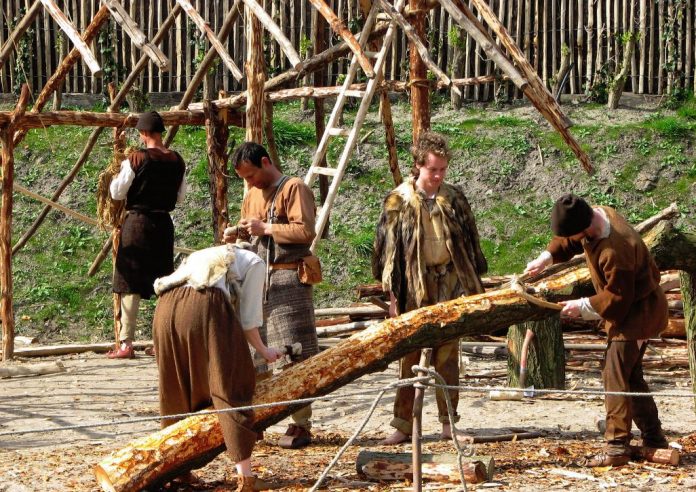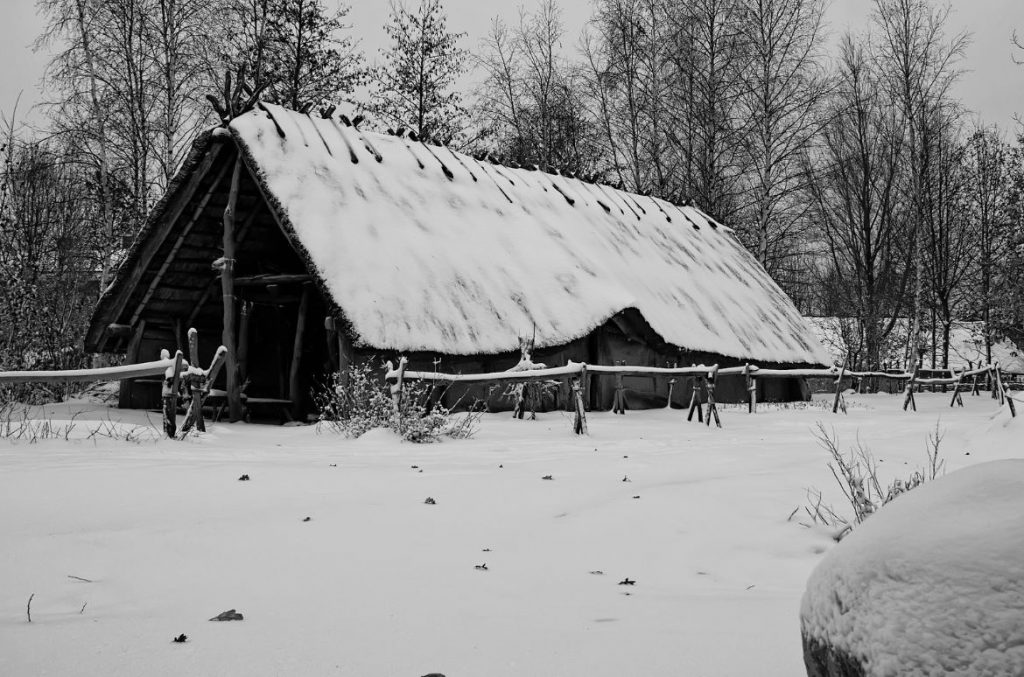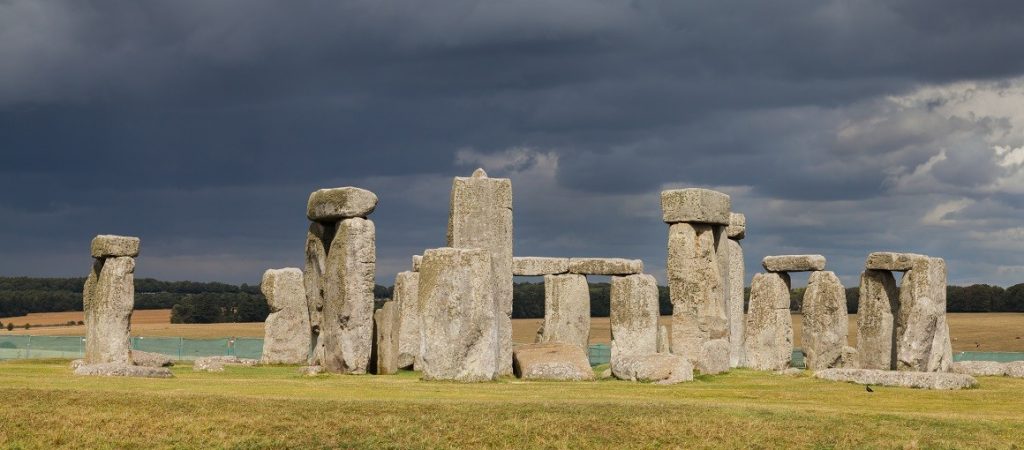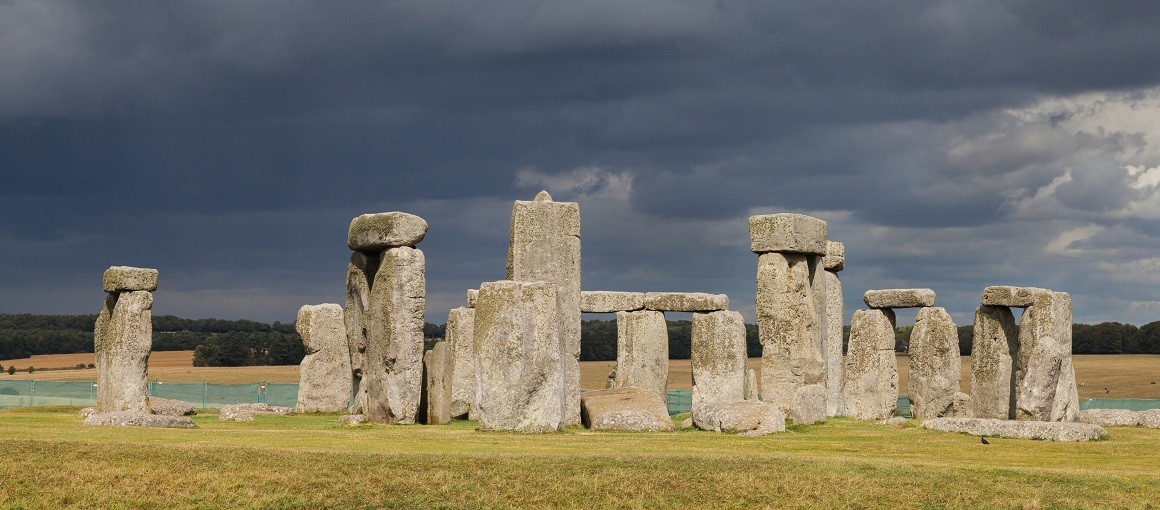Scientists from the Natural History Museum, the Francis Crick Institute and University College Dublin have looked in detail at the genetics of people who inhabited Britain during the Neolithic (4000-2500 BC) and the Chalcolithic-Early Bronze Age (2500-1600 BC), highlighting groups of close genetic relatives buried in separate cemeteries in the landscape surrounding Stonehenge.
The new research uses data from a 2018 study, which is still the largest analysis of ancient DNA from Britain ever conducted, that identified a >90% replacement of the genetic ancestry of people living in Britain between 2500-2100 BC. This coincided with the introduction of ‘Beaker’ material culture and burial practices, and was interpreted to indicate that there were substantial movements of people into Britain from continental Europe during this period.
At the time it was published, popular coverage of the original study speculated that this was a rapid event, potentially involving ‘invasion’ by male warriors, but the new study has found from detailed analysis that it was more likely a long-term process, taking place over maybe 10-16 generations, with both men and women moving for a variety of reasons that might have included exchange, pilgrimage, and the pasturing of animals. Incoming populations and their descendants tended to bury their dead, but local groups probably continued to cremate their dead, which destroys the DNA, or treat them in ways which leave no record. The archaeologically ‘invisible’ local population are only seen when they have children with groups who buried their dead. This may be partly responsible for why this change in ancestry appeared so rapid at first.
Dr Tom Booth, archaeologist at The Francis Crick Institute has said: ‘Initially it looks like groups of ‘locals’ and ‘incomers’ and their descendants lived in parallel with one another to some extent – occupying the same landscapes, slowly integrating and only having children with each other infrequently. After around 300 years they start having children together more liberally – it’s at this point, the older population then have a much lower genetic legacy overall. Why they have such a small overall genetic legacy is still a mystery. It could be that there just weren’t so many people living in Britain at the time these Beaker groups move in from continental Europe.’
Prof Ian Barnes, Researcher and Division Lead at the Natural History Museum has said: ‘An issue we face is that we also don’t know how many people there were from either group, although population size may be declining in the local population of Britain at the end of Neolithic. It may be that the reason why we seem to pick up so many genetic relatives in the Bronze Age is because only small groups of people were moving into Britain.’
The new study also highlights how genetic ties were referenced variably in death among burials in the Stonehenge landscape. A man and his juvenile son were buried next to one another in a cemetery on Amesbury Down. By contrast, a man, his nephew and his nephew’s daughter were buried across three different cemeteries separated by several kilometres. A young man was buried on Boscombe Down with the skull of his paternal cousin or half-brother at his feet.
Prof. Joanna Brück, archaeologist at University College Dublin, said: ‘Existing interpretations of the genetic evidence paint a picture of a patriarchal society, in which male immigrants married local women. Our research shows that although links with paternal relatives were important, kinship organization was variable, and other relationships, including with maternal kin, were also significant. Sometimes, people who were not genetically related to each other could also be viewed as kin’.
The study found that it is likely there was cultural exchange between existing local groups and incomers. Dr Booth continues ‘Even though they have no ancestry from the older population, they incorporate their monuments into their belief systems very quickly. They are burying people in these areas to reference these monuments as prestigious areas to bury their dead even though it wasn’t their genetic ancestors who built them. Stonehenge and its surrounding landscape are emblematic to a certain extent because it’s important to all groups in this period and when they integrate, it maintains its importance.’
Here is the (open access) article Tom Booth wrote with Jo Brück, Selina Brace and Ian Barnes on ancient DNA, genetic change in the Bronze Age, ‘Beaker people’ and genetic relatives buried in the Stonehenge landscape. published in Cambridge Archaeological Journal on 11 February 2021





